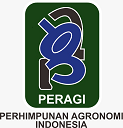Association of Single Nucleotide Polymorphisms (SNPS) to Black Spot Resistance in Roses
Abstract
Rose black spot caused by Diplocarpon rosae is the most severe and global disease of garden roses. Breeding of disease resistant varieties is one of the most important goals of modern garden rose breeding. Single nucleotide polymorphisms (SNPs) are the most abundant type of polymorphism found in eukaryotic genomes. SNP markers can be used in a wide variety of applications, including association studies, genetic diversity analysis, and marker-assisted selection in plant breeding programs. The aim of this project was to analyze black spot resistance in a rose association panel through leaf inoculation assays with single isolate pathotypes as well as a field mixture of D. rosae isolates and to establish a relationship between resistance and the available SNP markers. In this study, 96 diverse cultivars of roses were evaluated phenotypically for resistance against black spot through artificial inoculations. 63000 SNPs that were developed in previous studies were used to genetically analyze the cultivars and find associations with resistance against black spot disease using mixed linear model in TASSEL 3.0. Differences in the phenotypic reaction to field mixture of isolates and the Ab13 single conidial isolate of this pathogen were observed between genotypes. One hundred and forty-nine SNPs were found to be significantly associated with resistance against field mixtures of black spot. For the Ab13 single isolate, only one significant SNP was found. These SNPs were mapped on the rose chromosomes, and found on chromosome one, three and four. These associated SNP and Rdr1 markers can be used for marker-assisted selection in breeding for black spot resistance in rose.
Keywords
Full Text:
PDFReferences
Agrios, G. (2005). Plant Pathology (K. D.Sonnack (ed.); 5th ed.). Elsevier Academic Press.
Ameha YaekobGebreiyesus. (2009). Genetic Characterization of Resistance Genes against Black Spot (Diplocarpon rosae, Wolf) in Rose Populations. Leibniz Universität, Hannover.
Basaki, T., M. Mardi, M. Jafarkhani Kermani, S.M. Pirseyedi, M.R. Ghaffari, A. Haghnazari, P. Salehi Shanjani, P. K. (2008). Assessing Rosa Persica Genetic Diversity Using Amplified Fragment Length Polymorphisms Analysis. Scientific Horticulture, 120 (2009), 538–543. https://doi.org/10.1016/j.scienta.2008.12.001
Blechert, O and Debener, T. (2005). Morphological characterization of the interaction between Diplocarpon rosae and various rose species. Plant Pathology, 54, 82–90. https://doi.org/10.1111/j.1365-3059.2004.01118.x
Bradbury, P. J., Zhang, Z., Kroon, D. E., Casstevens, T. M., Ramdoss, Y., & Buckler, E. S. (2007). TASSEL : software for association mapping of complex traits in diverse samples. 23(19), 2633–2635. https://doi.org/10.1093/bioinformatics/btm308
Diro Terefe-ayana, and T. D. (2010). An SSR from the leucine-rich repeat region of the rose Rdr1 gene family is a useful resistance gene analogue marker for roses and other Rosaceae. Plant Breeding, 130, 291–293. https://doi.org/10.1111/j.1439-0523.2010.01780.x
Dong, Q. (2014). Characterization of Resistance to Black Spot Disease of Rosa Spp. Texas A&M University.
Drewes-Alvarez, R. (2003). Black Spot. In S. Roberts, A., Debener, T. and Gudin (Ed.), Encyclopedia of Rose Science (pp. 148–153). Elsevier Academic Press.
Falush, D., Stephens, M., & Pritchard, J. K. (2007). Inference of population structure using multilocus genotype data : dominant markers and null alleles. Molecular Ecology Notes, 7(4), 574–578. https://doi.org/10.1111/j.1471-8286.2007.01758.x
Gachomo, E., & Simeon.O Kotchoni. (2016). Microscopic and biochemical evidence of differentially virulent field isolates of Diplocarpon rosae causing black spot ... Plant Physiology and Biochemistry, 48(2(November), 167–175. https://doi.org/10.1016/j.plaphy.2010.01.003
Hardy & Vekemans. (2002). SPAGeDi: a versatile computer program to analyze spatial genetic structure at the individual or population levels. Molecular Ecology Notes, 2(4), 618–620. https://doi.org/10.1046/j.1471-8278
Hardy, O. J. (2003). Estimation of pairwise relatedness between individuals and characterization of isolation-by-distance processes using dominant genetic markers. Molecular Ecology, 12(6), 1577–1588. https://doi.org/10.1046/j.1365-294X.2003.01835.x
Hummer, K. E., & Janick, J. (2009). Rosaceae : Taxonomy , Economic Importance , Genomics. In S. E. G. Folta, K.M (Ed.), Genetics and Genomics of Rosaceae, Plant Genetics and Genomics: ?Springer Science+Business Media, LLC. https://doi.org/10.1007/978-0-387-77491-6
Johnson, R. C., Nelson, G. W., Troyer, J. L., Lautenberger, J. A., Kessing, B. D., Winkler, C. A., & O’Brien, S. J. (2010). Accounting for multiple comparisons in a genome-wide association study (GWAS). BMC Genomics, 11(724). https://doi.org/10.1186/1471-2164-11-724
Koning-Boucoiran, C. F. S., Danny Esselink, G., Vukosavijev, M., Van’T Westende, W. P. C., Gitonga, V. W., Krens, F. A., Voorrips, R. E., Van De Weg, W. E., Schulz, D., Debener, T., Maliepaard, C., Arens, P., & Smulders, M. J. M. (2015). Using RNA-seq to assemble a rose transcriptome with more than 13,000 full-length expressed genes and to develop the wagRhSNP 68k axiom SNP array for rose (Rosa l.). Frontiers in Plant Science, 6(APR), 1–10. https://doi.org/10.3389/fpls.2015.00249
Mammadov, J., Aggarwal, R., Buyyarapu, R., & Kumpatla, S. (2012). SNP markers and their impact on plant breeding. International Journal of Plant Genomics, 2012, 11. https://doi.org/10.1155/2012/728398
Menz, I. N. A., Straube, J., Linde, M., & Debener, T. (2018). The TNL gene Rdr1 confers broad-spectrum resistance to Diplocarpon rosae. Molecular Plant Pathology, 19(5)(20 18), 1104–1113. https://doi.org/10.1111/mpp.12589
Nybom, H. (2009). Introduction to Rosa. In K. M. and S. E. G. . Folta (Ed.), Genetics and Genomics of Rosaceae. (pp. 339–351). Springer Science + Business Media, New York, USA. https://doi.org/10.1007/978-0-387-77491-6
Pandit, R., Bhatta, R., Bhusal, P., Acharya, B., Subedi, S., & Shrestha, J. (2020). Response of Local Potato Cultivars to Late Blight Disease (Phytophthora infestans (Mont.) de Bary) under Field Conditions. Agro Bali : Agricultural Journal, 3(1), 28–37. https://doi.org/10.37637/ab.v3i1.464
Pritchard, J. K., Stephens, M., Rosenberg, N. A., & Donnelly, P. (2000). Association mapping in structured populations. American Journal of Human Genetics, 67(1), 170–181. https://doi.org/10.1086/302959
Rispail, N., Dita, M. A., González-Verdejo, C., Pérez-De-Luque, A., Castillejo, M. A., Prats, E., Román, B., Jorrín, J., & Rubiales, D. (2007). Plant resistance to parasitic plants: Molecular approaches to an old foe: Research review. New Phytologist, 173(4), 703–712. https://doi.org/10.1111/j.1469-8137.2007.01980.x
Schulz, D. F., Linde, M., Blechert, O., & Debener, T. (2009). Evaluation of Genus Rosa Germplasm for Resistance to Black Spot, Downy Mildew and Powdery Mildew. In Europ.J.Hort.Sci (Vol. 74, Issue 1).
Schulz, D. F., Schott, R. T., Voorrips, R. E., Smulders, M. J. M., Linde, M., & Debener, T. (2016). Genome-wide association analysis of the anthocyanin and carotenoid contents of rose petals. Frontiers in Plant Science, 7. https://doi.org/10.3389/fpls.2016.01798
Semagn, K., Bjørnstad, Å., & Ndjiondjop, M. N. (2006). An overview of molecular marker methods for plants. African Journal of Biotechnology, 5(25), 2540–2568. http://www.academicjournals.org/AJB
Smulders, M. J. M., Voorrips, R. E., & Esselink, D. (2016). Development of the WagRhSNP AXIOM SNP array based on sequences from tetraploid cut roses and garden roses Development of the WagRhSNP AXIOM SNP Array Based on Sequences from Tetraploid Cut Roses and Garden Roses. In M. Debener, T and Linde (Ed.), Proceedings of the 6th international symposium on rose research and cultivation. https://doi.org/10.17660/ActaHortic.2015.1064.20
Thi Hong Nhung Nguyen, D. S., Winkelmann, T., & Debener, T. (2017). Genetic dissection of adventitious shoot regeneration in roses by employing genome-wide association studies. Plant Cell Reports, 36(9), 1493–1505. https://doi.org/10.1007/s00299-017-2170-8
Von Malek, B., & Debener, T. (1998). Genetic analysis of resistance to blackspot (Diplocarpon rosae) in tetraploid roses. Theoretical and Applied Genetics, 96(2), 228–231. https://doi.org/10.1007/s001220050731
Whitaker, V. M., Debener, T., Roberts, A. V., & Hokanson, S. C. (2010). A standard set of host differentials and unified nomenclature for an international collection of Diplocarpon rosae races. Plant Pathology, 59(4), 745–752. https://doi.org/10.1111/j.1365-3059.2010.02281.x
Xue, A. G., & Davidson, C. G. (1998). Components of partial resistance to black spot disease (Diplocarpon rosae Wolf) in garden roses. HortScience, 33(1), 96–99.
Refbacks
- There are currently no refbacks.


























